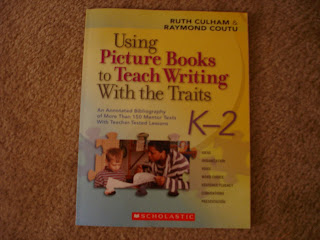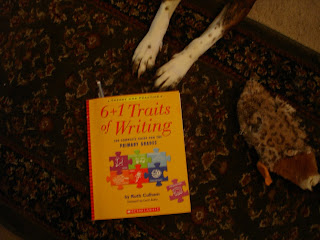
Having only taught very young writers in high poverty schools, my experience as a teacher of writing was somewhat limited. I felt lucky to get the kids to put something down on the page or regurgitate some information about a topic we had studied. Low language skills are the foundation of reading and writing delays in young children. Ameloriating this gap in literacy development is the topic for another blog and another time.
My current teaching situation is a blessing for me as a teacher of writing. I am being forced to examine my practices and push myself out of the safety of my little poverty writing box. I am being forced to learn more in order to be a better teacher for these kids.
At the beginning of the school year, I struggled to understand why my firsties were such reluctant writers. They could write, they simply chose not to put any effort into it. Good enough seemed to be the mantra and it frustrated me. Here were kids from literate homes with decent reading skills and full-sentence conversations. They knew stuff and could make sense of their experiences. So - why wouldn't they write?
Page after journal page was filled with simple sentences and drawings - lots and lots of drawings. Lest you think that time and effort went into these creations, reconsider. Very little effort other than painstaking use of the watercolor marker filled these pages. Tic-tac-toe games, heads with dotted eyeballs, and energetic scribblings took the place of what I wanted to see there - thoughtful writing!
I cajoled. I modeled. I brought forth powerful literature. I told myself that pictures are the foundation, the toolbox, of emergent writing. I told myself to give them time. I stepped back, took a good look, talked with my teaching partner, and then came back with a vengeance. Suddenly, my kids are writing.
Here is what I've learned:
You have to keep it up.
Most powerful is the seed idea. The kids are full of them but don't realize it. As teachers, we have to be "noticers" of the seed ideas. We have to pay attention to what the kids are telling us and the stories they share. When a "good one" pops up, we have to be enthusiastic to the point of lunacy and say, "Yes! Yes! That is the perfect seed idea! You can write about it." You always have the best shoes, I tell Kaycie. Are you a shoe fanatic? You should write about your shoes. They are so fun!
You model. "Brian and I visited my parents over the weekend. Hank, the family dog, stole Brian's hat and we couldn't find it."
"I was reading on Saturday afternoon. I had a bag of cherries on my tummy and I put the seeds into a bowl that was on the floor below me. I kept hearing a crunching sound but didn't think too much about it because my book was really good. Then I looked down and saw that all the cherry pits were gone. My dog, Duke, ate them all!"
You use the examples of other students and embellish them to make the seed ideas stand out. "Ty just did the smartest thing. He wrote about a visit from his cousin and then added details so that we could picture what fun they had eating ice cream."
One day Cheyenne arrived to school late. Her socks, she explained, were still wet from the washing machine and her dad had to dry them. He put them in the microwave oven to dry them. What a great seed! I attacked it and asked Cheyenne very loudly and with much incredulity why in the world did her dad put her socks in the microwave oven! Cheyenne did write about this but the best part happened later when the other kids got into the action and wrote letters to Mr. V about the proper methods of drying wet socks.
You have to read with a writerly eye and find ideas in children's literature that can expanded into good writing lessons. Using Picture Books to Teach Writing With the Traits, is an excellent springboard for finding those essential pieces of literature and non-fiction texts.
Now that my kids are writing, I find myself scrambling to keep ahead of them and give them what they need to succeed. The rubrics in 6+1 will come in handy - for all of us.




